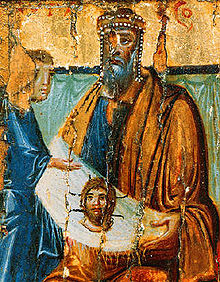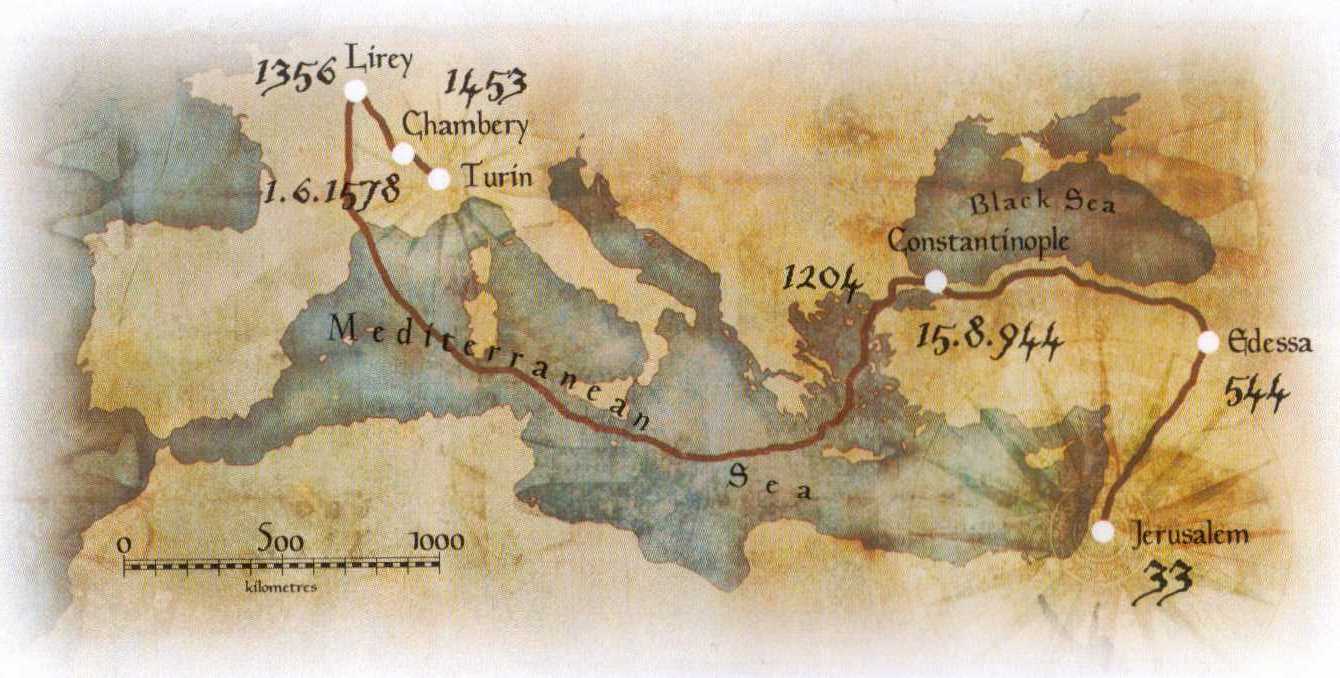
From the time of the apostles (it’s said that Saint Jude showed it to a Turkish king named Abgar) to its rediscovery around the eleventh century, no one is quite sure where it was.
More intriguing yet: the reason why no one knows where it was may well be that the Shroud had been folded in such a way as only the Face was visible, and during all that time it was kept under lock and key in sort of a small casket in the very arch — in a secret compartment — of a stone city gate as the infinitely precious relic it is.
The folded cloth — perhaps even confused with the Veil of Veronica — was known as the Mandylion, and it traveled from the Holy Land through Lebanon and Syria to the ancient city of Edessa in Turkey — a region of the world that may soon come into focus on the world stage, positioned as it’s on the other side of the Black Sea from Ukraine. (Edessa is now called Urfa.)

That turned out to be “Thaddeus of Edessa” (as he is known in the Eastern tradition), who if not one of the Twelve Apostles was among the seventy disciples — and possibly the same as the Jude who was one of the Twelve Apostles. For there were two Judes. No one is exactly sure which one it was.
Legend relates that after Jesus’s Resurrection, the Apostle took the image left by Him on the shroud to Edessa, by the virtues of which the king was miraculously healed.

Or are these very separate items?
That’s unknown. (We know the tradition, which we’ll stick to. Though never mentioned in the New Testament, Veronica’s encounter is a powerful Station of the Cross.)
“All this makes all the more intriguing the evidence that someone, sometime after the Mandylion’s arrival in Constantinople [again, around the tenth century], seems to have undone the gold trelliswork covering the cloth, untwined the fringe from the surrounding nails, carefully unfolded the cloth, and, for the first time since the days of the apostles, set eyes on the concealed full-length figure,” writes Ian Wilson in his amazing history of it (The Shroud of Turin: The Burial Cloth of Jesus Christ?).

“For the very same mediator between God and man [Christ], that He might in every way satisfy the king [Abgar], stretched His whole Body on a cloth, white as snow, on which the glorious image of the Lord’s Face and the length of His whole Body was so divinely transformed that it was sufficient for those who could not see the Lord bodily in the flesh, to see the transfiguration made on the cloth.”
It was after exposure of the entire cloth that more precise descriptions of Jesus’s Crucifixion evolved, as had portraits of His Face when the Mandylion was seen centuries before, informing art of the day. After Constantinople, the Shroud seemingly traveled back to the Holy Land and then up to France (kept perhaps by the Knights Templar during the High Middle Ages) before finding its way to Italy and the city of Turin, where it resides today.
An endless wonder — and mystery.
A massive book called History of the Church by an English monk named Ordericus Vitalis around 1130 wrote that “Abgar reigned as toparch of Edessa. To him the Lord Jesus sent… a most precious cloth with which He wiped the sweat from His Face, and on which shone the Savior’s features miraculously reproduced. This displayed to those who gazed on it the likeness and proportion of the body of the Lord.”
As Wilson points out, a Vatican Library codex, also dated to the twelfth century, repeated this tradition in its version of the letter from Jesus to Abgar. To wit: “If indeed you desire to look bodily upon My Face, I send you a cloth on which know the image not only of My Face, but of My whole Body has been divinely transformed.”
[see also: Prayers to Saint Jude]



